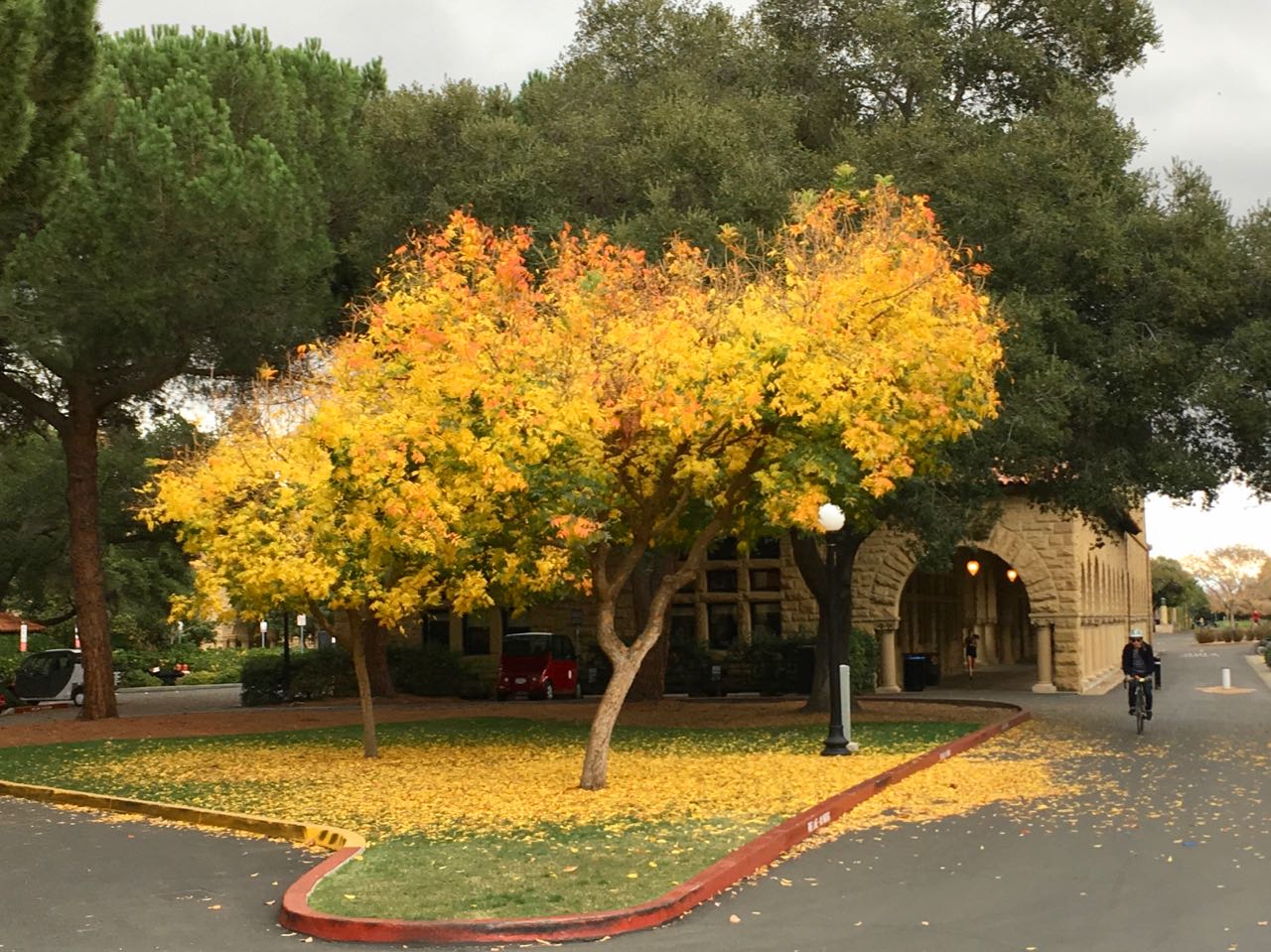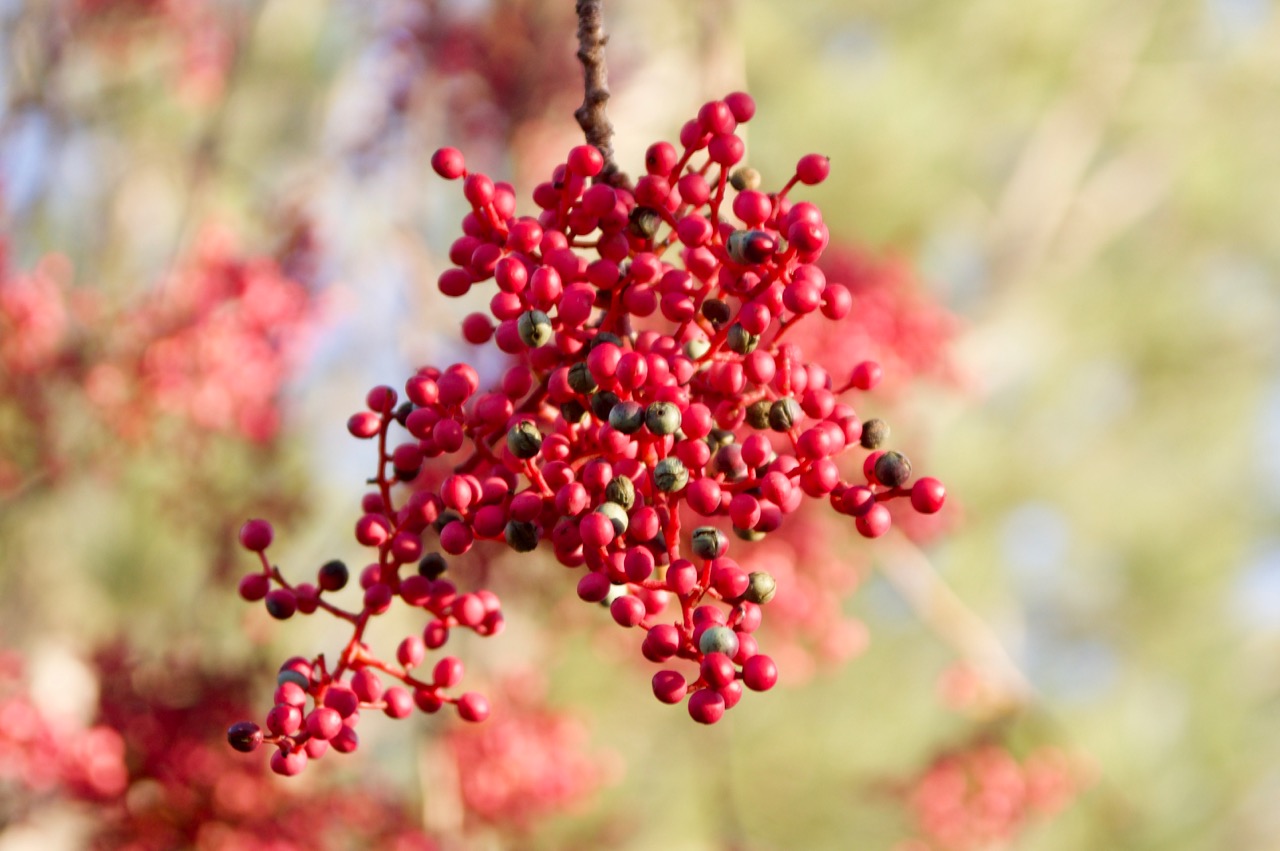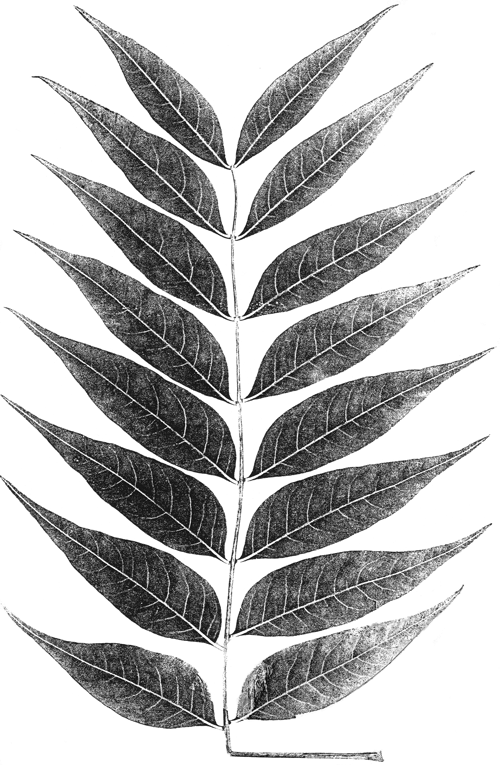Pistacia chinensis
 Chinese pistache
Chinese pistache

A deciduous tree with pinnate leaves 9 inches long made up of a dozen or so narrow-pointed leaflets that take on a brilliant orange and red color in fall. The onset of color is conspicuously nonsynchronous. Small red drupes are produced on the female trees, finally turning china blue, so that both colors can be seen at the same time. By early April the pistache leaf buds are still ignoring the advent of spring, but they are distinguishable (on Bowdoin Street) from the adjacent ashes by conspicuous pollen clusters. Chinese pistache is not resistant to verticillium wilt but has no insect problems and has well behaved roots.
Examples are in the east courtyards of Wilbur Hall, and behind Memorial Church on Escondido Mall. Numerous trees provide good fall color on Bowdoin Street. The very handsome specimens on Santa Teresa Street at Lomita Drive and in front of the Humanities Center were planted in 1954 by Jack Shoup, director of the Alumni Association. Among recent additions is the row of nine on the south side of the David Packard Building; more are behind the William Hewlett Teaching Center.
Male trees are preferred by some, and the fruitless variety ‘Keith Davey’, a male clone, is planted here and there on campus. Male trees do shed a fair amount of wind-borne pollen in the spring, but allergenicity is generally low, and clinically insignificant compared to other pollens.
P. vera from Central Asia and Afghanistan is distinguished by having only 3–5 oval leaflets and, of course, the much larger fruits containing the popular pistachio nuts of commerce. In Persia the name was pistah. The tasty nut clearly arrived in the Mediterranean a long time ago, because the Greeks had a name for it, pistakion, whose Latin form pistacium was the basis of Linnaeus’ name Pistacia for the genus. The Atlas pistache P. atlantica is used as stock onto which to graft P. vera. It was pistachio nuts that Jacob sent to Egypt. Another species (P. lentiscus), the mastic tree, is mentioned in the book of Daniel, where the dirty old Elders falsely accuse Susannah of adultery.
About this Entry: The main text of this entry is from the book Trees of Stanford and Environs, by Ronald Bracewell, published 2005. Note on male trees added by John Rawlings; Hailen Mak, M.D., provided the note on allergenicity (c 2010). Minor edits to descriptions (Sep 2019, SP). P. vera native range and leaf description clarified (Nov 2024, SP).






